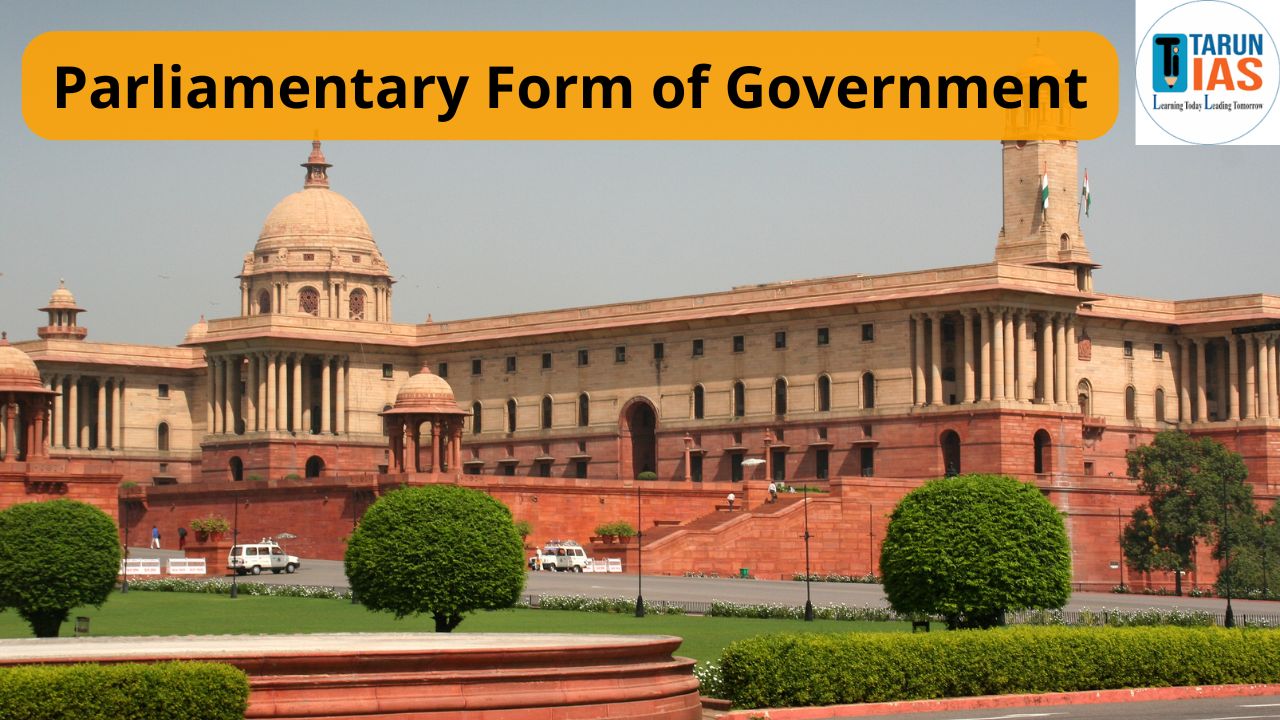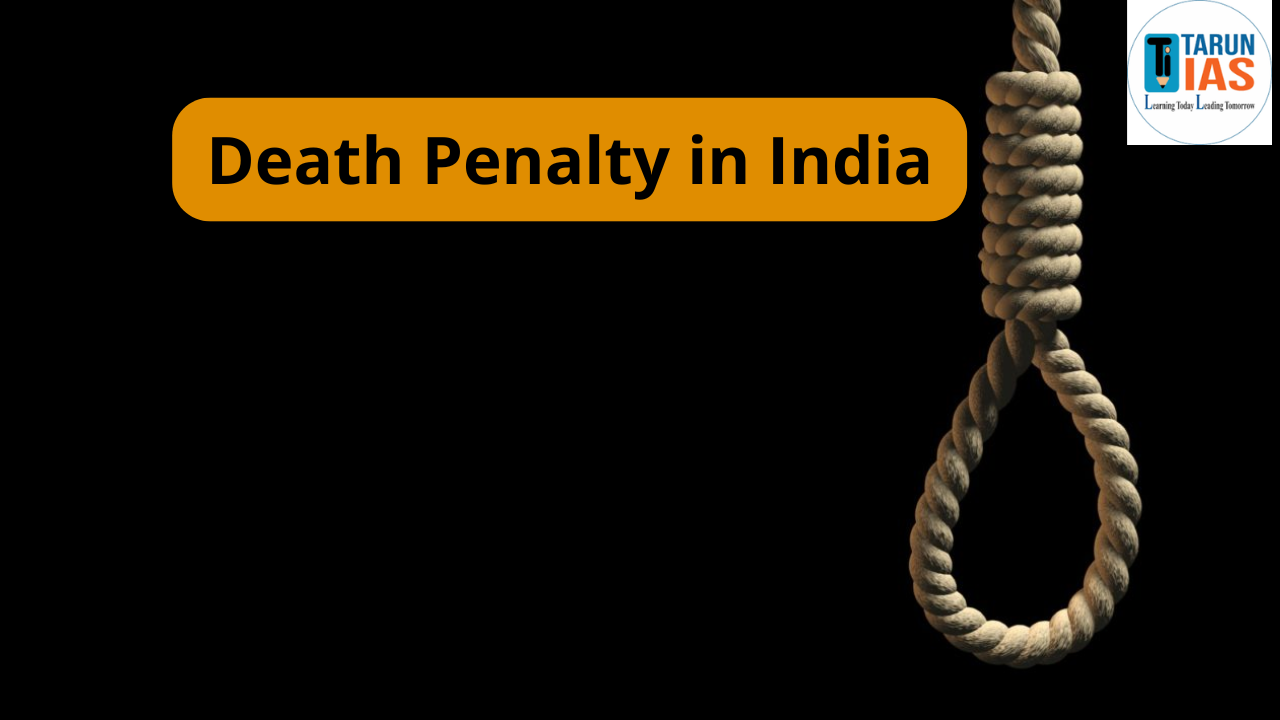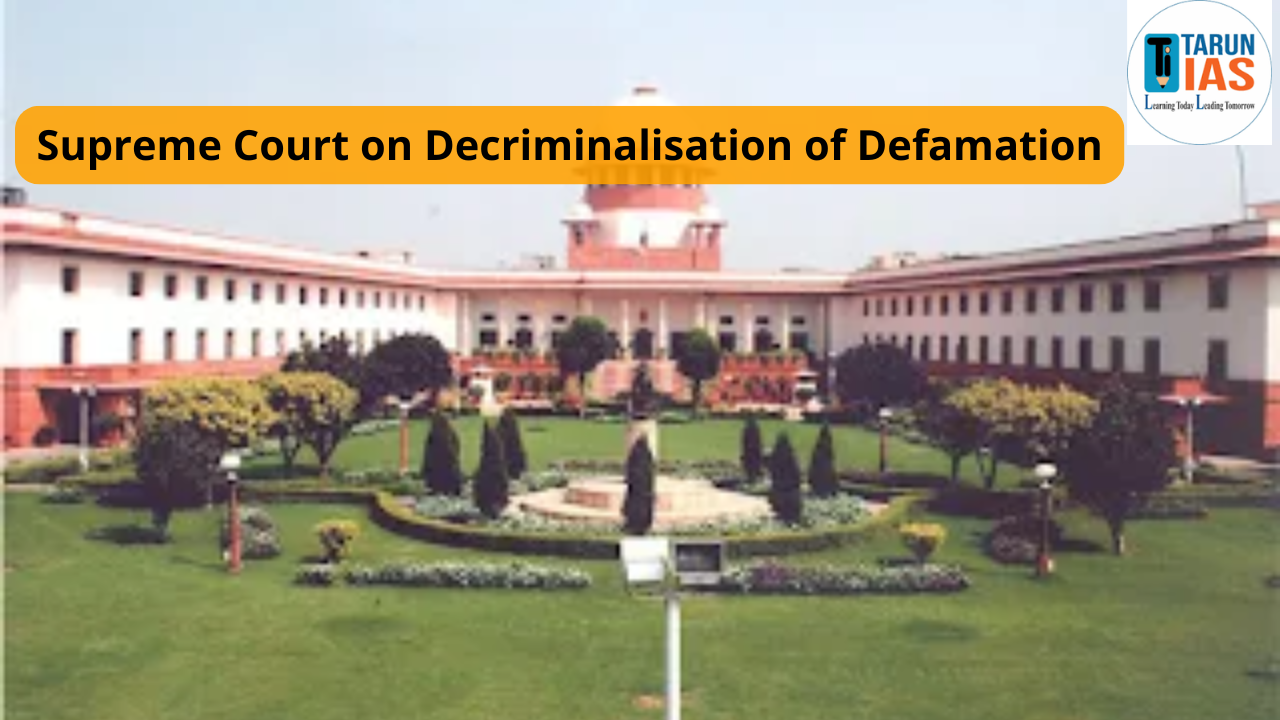India, the world’s largest democracy, adopted the Parliamentary form of Government, drawing heavily from the British model. This system, also known as the Cabinet system or Responsible Government, is characterized by a close relationship between the executive and the legislature, collective responsibility, and the leadership of the Prime Minister.
In this article, we will explore the meaning, features, significance, merits, and demerits of the Parliamentary form of Government, along with a comparison between the Indian and British systems.
Background of Parliamentary Form of Government in India
The Parliamentary form of government in India draws its roots from the British Westminster model. In colonial rule, institutions such as the Indian Councils Act of 1861 and the Government of India Act of 1919 gradually introduced representative elements.
- Government of India Act, 1935 significantly shaped the future of India’s governance structure. When the Constitution was framed post-Independence, the framers, after intense deliberation in the Constituent Assembly, adopted the parliamentary system for its accountability, representation, and familiarity with Indian political experience.
- This system rests on the principle of collective responsibility of the executive to the legislature, with the President as the nominal head and the Prime Minister as the real executive authority.
- India’s socio-political diversity, need for consensus, and emphasis on democratic values made the parliamentary model more suitable than the presidential one. It ensures checks and balances while keeping the executive answerable to the people’s representatives.
Parliamentary form of Government Meaning and Concept
In a parliamentary form of government, the executive is not an independent body but emerges from within the legislature. Its authority and legitimacy are drawn directly from the elected representatives, and it remains answerable to them throughout its tenure. This close-knit relationship ensures constant accountability. Unlike the presidential system—where the executive is elected separately and operates independently—the parliamentary system integrates the executive into the legislative framework, making it a part of the collective decision-making process. The government is formed by the political party or coalition that secures a majority in the lower house of Parliament after general elections.
In this form, there are two types of executives:
- Nominal Executive: The ceremonial head of the state, such as the President in India or the Monarch in the UK.
- Real Executive: The Prime Minister and the Council of Ministers, who wield actual power and are responsible for governance.
The essence of this system lies in accountability, collective responsibility, and coordination between the legislature and the executive.
Formation of Government in Parliamentary Form of Government
The formation of the government in a Parliamentary form of Government takes place after general elections. The majority party or a coalition of parties is invited by the Head of State to form the government. The leader of this alliance becomes the Prime Minister, who then selects the Council of Ministers. These ministers are typically senior leaders or trusted members of the ruling party or coalition.
Once the list of ministers is finalized, it is submitted to the President (or Monarch) for formal approval. The cabinet, under the leadership of the Prime Minister, then assumes executive authority and begins governing.
Parliamentary form of Government Features
The parliamentary form of government is marked by a close relationship between the legislature and the executive. The Prime Minister, as head of the government, leads a council of ministers drawn from the legislature and remains collectively accountable to it. This system ensures responsible governance, flexible tenure, and a continuous link between law-making and its execution.
Close Relationship Between Executive and Legislature
- In the Parliamentary form of Government, the executive (Prime Minister and Council of Ministers) is part of the legislature. Ministers are typically elected members of Parliament, ensuring that there is a constant interaction and overlap between the two organs of government.
Collective Responsibility
- The entire Council of Ministers is collectively responsible to the lower house of the Parliament (Lok Sabha in India). This means if the Lok Sabha passes a vote of no-confidence against the government, all ministers, including the Prime Minister, must resign.
Dual Executive in Parliamentary Form of Government
- A key feature of this system is the presence of two executives:
- Nominal Executive: The ceremonial head (President or Monarch), who acts on the advice of the Prime Minister.
- Real Executive: The Prime Minister, who is the actual head of the government.
Leadership of the Prime Minister
- The Prime Minister holds a pivotal position in the parliamentary system of government. As the head of the Cabinet, leader of the majority party in the legislature, and chief spokesperson of the government, the Prime Minister guides the overall policy direction of the nation.
- They coordinate the functioning of various ministries, ensuring cohesive governance, and also serve as the vital link between the President and the Council of Ministers, facilitating smooth communication and execution of constitutional duties.
Bicameral Legislature in Parliamentary Form of Government
- Most parliamentary democracies, including India, follow a bicameral legislature – consisting of the Lok Sabha (House of the People) and the Rajya Sabha (Council of States). While the Lok Sabha has greater control over the executive, both houses play important roles in legislation and oversight.
Secrecy of Cabinet Proceedings
- Cabinet meetings are held in strict confidence, and decisions are made collectively. Ministers are expected to support cabinet decisions in public, even if they privately disagree. If a minister cannot abide by the collective decision, they are expected to resign.
No Fixed Tenure Parliamentary Form of Government
- Unlike the Presidential system where the executive enjoys a fixed tenure. In the parliamentary form of government, the Council of Ministers remains in office only as long as it enjoys the confidence of the majority in the lower house.
Coordination Between Legislature and Executive in Parliamentary Form of Government
One of the foundational principles of the Parliamentary form of Government is the coordination of power rather than its separation. This ensures that:
- Ministers can participate in legislative debates.
- The government can propose bills, summon Parliament, or even recommend its dissolution.
- Parliament can question the government, examine its policies, and ensure transparency and accountability.
This mutual dependency fosters cooperation but also includes checks and balances to prevent misuse of power.
Role of the Opposition in Parliamentary Form of Government
In a healthy parliamentary democracy, the opposition plays a crucial role. Although not in power, opposition parties:
- Act as watchdogs over government policies.
- Scrutinize bills and proposals.
- Present alternative policies.
- Represent dissent and ensure democratic dialogue.
In the UK, the opposition even forms a shadow cabinet, a concept absent in India, where ministers-in-waiting mirror the portfolios of current ministers and prepare to take over in case of a change in power.
Parliamentary form of Government in India is a Unique Adaptation
While India adopted the British Parliamentary form of Government, it introduced several modifications:
- The Prime Minister can be a member of either house of Parliament, unlike in Britain where they must belong to the House of Commons.
- The Speaker of Lok Sabha in India continues to be a member of their political party, whereas in Britain, the Speaker resigns from their party and remains impartial.
- India does not follow the shadow cabinet model like Britain.
Despite these differences, the Indian model preserves the core values of parliamentary democracy – accountability, representation, and responsible governance.
Merits and Demerits of Parliamentary Form of Government
The parliamentary form of government in India carries both strengths and limitations. On one hand, it ensures democratic accountability, smooth coordination between the executive and legislature, and diverse representation. On the other, it often suffers from instability, blurred separation of powers, and excessive Prime Ministerial control. While it suits India’s pluralistic society, its success depends largely on political discipline, responsible opposition, and active parliamentary participation to balance governance with democratic values.
Merits of Parliamentary Form of Government in India
- Collective Responsibility Ensures Accountability
- The Council of Ministers is collectively responsible to the Lok Sabha.
- It ensures that the executive remains answerable to the people through their elected representatives.
- Example: The 2G scam and Coal scam led to the resignation of ministers and intensified parliamentary scrutiny.
- Harmony Between Executive and Legislature
- Since the executive is drawn from the legislature, there is coordination and less friction in policy-making.
- It facilitates smoother passage of laws and policies.
- Example: During UPA-I, landmark legislations like RTI and NREGA were easily passed due to this synergy.
- Prevents Authoritarianism
- A Prime Minister can be removed by a vote of no-confidence, making it difficult for authoritarian tendencies to grow.
- Example: Morarji Desai government (1979) and Atal Bihari Vajpayee government (1999) fell due to lack of majority.
- Flexibility and Quick Decision Making in Crises
- In times of emergency or political upheaval, leadership change is smooth without major constitutional breakdowns.
- Example: After Indira Gandhi’s assassination, Rajiv Gandhi was swiftly appointed Prime Minister to maintain stability.
- Wide Representation
- Coalition politics and parliamentary discussions ensure representation of diverse regions, languages, and communities.
- Example: Regional parties like DMK, TMC, and BJD gain national visibility and policy influence.
Demerits of Parliamentary Form of Government in India
- Instability Due to Coalition Politics
- Hung parliaments and fragile coalitions can lead to policy paralysis and frequent elections.
- Example: The 1990s saw multiple governments fall — from V.P. Singh to I.K. Gujral — due to unstable alliances.
- Erosion of Separation of Powers
- Since ministers are part of the legislature, the principle of separation of powers gets blurred.
- This can weaken institutional checks and balances.
- Example: Excessive executive control over Parliament through party whips.
- Dominance of the Prime Minister
- The Prime Minister can become excessively powerful, reducing the cabinet to a mere rubber stamp.
- Example: The term “Prime Ministerial form of government” is often used to describe Indira Gandhi’s era.
- Political Populism Overrides Policy
- Short-term populist measures are often taken to please the electorate rather than pursue long-term national interests.
- Example: Loan waivers, subsidies before elections without proper fiscal planning.
- Frequent Disruptions in Parliament
- Debates often become symbolic, with walkouts, protests, and adjournments becoming routine.
- Example: Important bills are sometimes passed without debate due to disruptions, as seen with the Farm Bills (2020).
Why Did India Adopt the Parliamentary form of Government?
The Constituent Assembly debated both Presidential and Parliamentary models but ultimately chose the latter due to:
- Familiarity: Having functioned under the British Parliamentary form of Government during colonial times, Indian leaders were familiar with its workings.
- Diversity: India’s vast diversity required a flexible and inclusive system. The parliamentary model allowed for coalition governments and better representation.
- Preventing Gridlocks: The strict separation of powers in the presidential system could lead to deadlocks between the executive and legislature – a risk India couldn’t afford in its nascent years.
Conclusion
The Parliamentary form of Government, while not without its flaws, has served India well in maintaining democratic governance and political accountability. It ensures that the executive remains answerable to the people’s representatives and upholds the principle of collective responsibility.
However, to enhance its efficiency, reforms in party functioning, internal democracy, legislative behaviour, and bureaucratic accountability are essential. As India continues to evolve as a global democracy, strengthening the institutions of Parliament and its practices remains crucial for deepening democratic values and delivering good governance.















